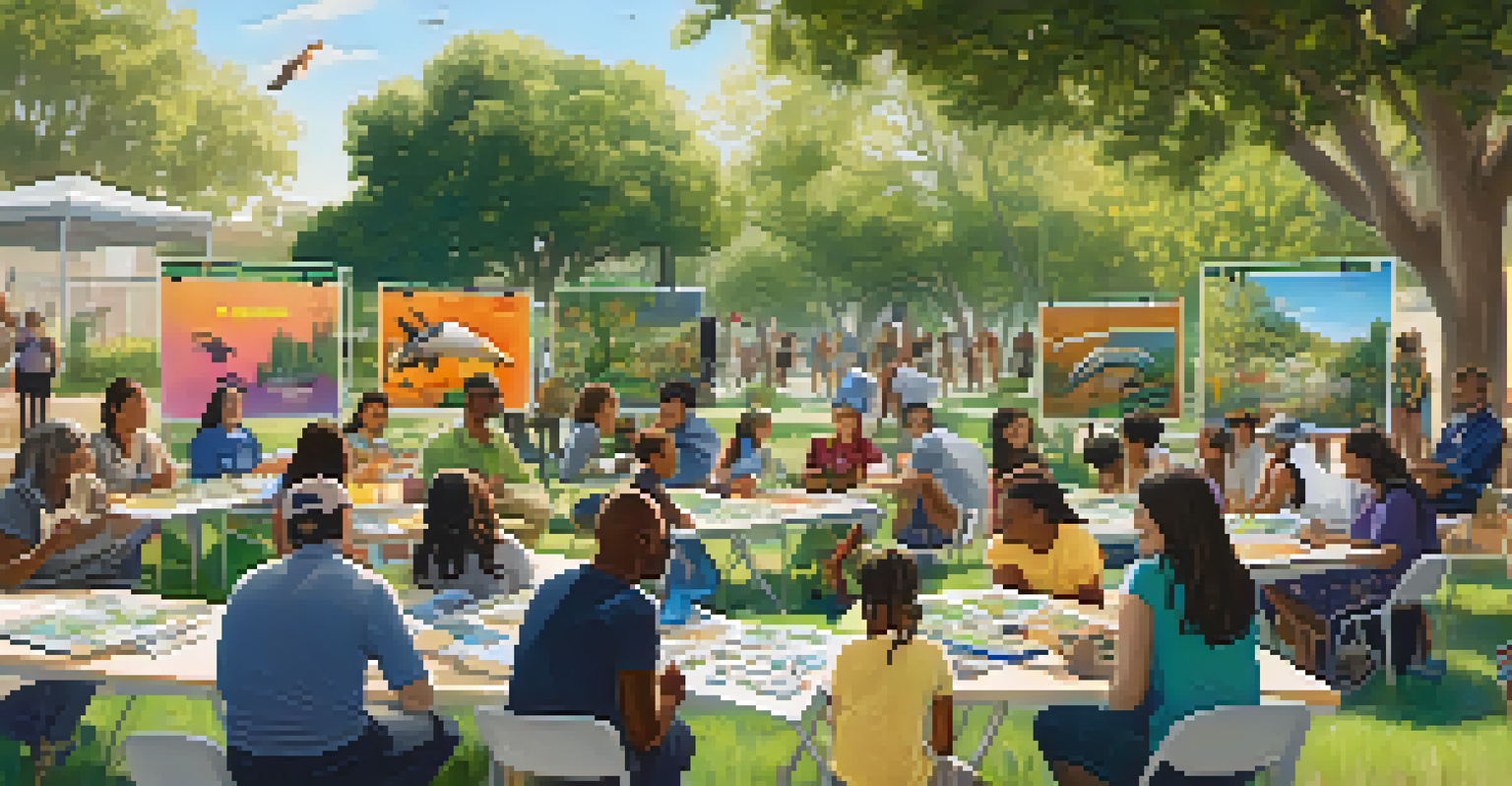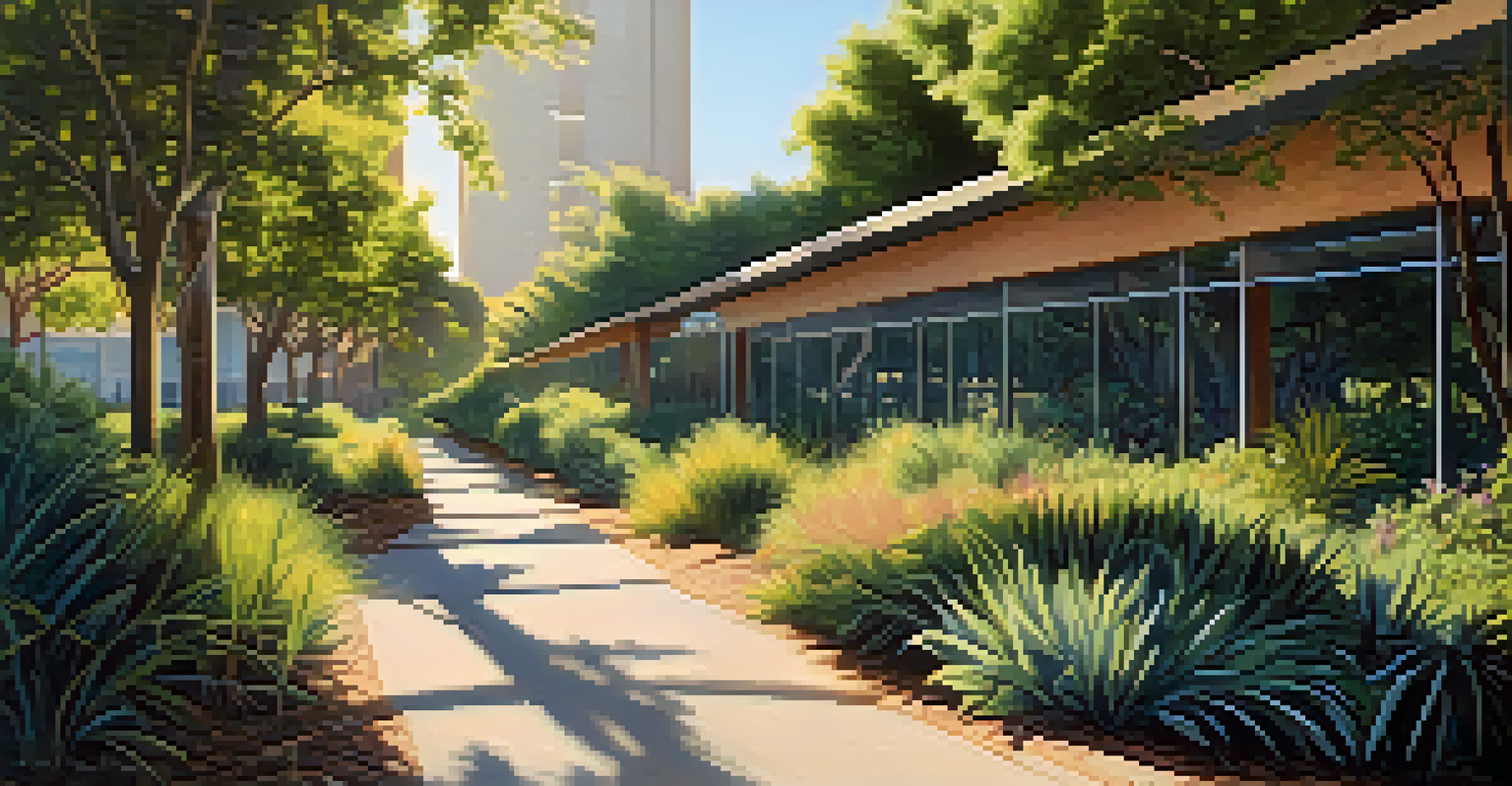Human-Wildlife Conflict: Challenges in Los Angeles Urban Areas

Understanding Human-Wildlife Conflict in Urban Environments
Human-wildlife conflict arises when the needs of wildlife clash with those of people. In urban areas like Los Angeles, this tension is increasingly evident as animals venture into neighborhoods searching for food or habitat. Factors such as habitat loss, urban sprawl, and climate change contribute to these encounters, creating challenges for both wildlife and residents.
The wildlife of urban areas is not a problem; it is a reflection of our own choices and behaviors.
For instance, coyotes often roam through suburban streets, drawn by the scent of pet food or unsecured trash. While these animals are typically shy, their increasing presence has raised concerns about safety and property damage. Understanding this conflict is the first step toward finding effective solutions.
In Los Angeles, the juxtaposition of natural and urban spaces leads to unique challenges. As urban areas expand, wildlife habitats shrink, forcing animals to adapt in ways that sometimes put them in direct contact with humans.
Common Species Involved in Conflicts in Los Angeles
Several wildlife species are frequently involved in conflicts within Los Angeles. Coyotes, raccoons, and skunks are among the most common, often seeking food in residential areas. Their adaptability to urban life makes them resilient, but it also heightens the risk of encounters with humans.

Interestingly, these animals find ample food sources in urban settings, leading to a cycle where their populations thrive. For example, raccoons are notorious for rummaging through garbage bins, creating messes that frustrate homeowners. Understanding the behaviors and needs of these creatures can help residents mitigate conflicts.
Urban Growth Increases Wildlife Conflicts
As urban areas expand, wildlife habitats shrink, leading to increased encounters between humans and animals.
Moreover, as we encroach on their habitats, these animals are simply trying to survive. This context is vital in fostering empathy and finding solutions that benefit both wildlife and residents.
The Impact of Urban Development on Wildlife Habitats
Urban development in Los Angeles has led to significant habitat loss for wildlife. As more homes and businesses are constructed, natural areas are paved over, leaving animals with fewer places to live and forage. This development disrupts ecosystems, pushing wildlife into closer contact with people.
In the end, we will conserve only what we love; we will love only what we understand; and we will understand only what we are taught.
For instance, the construction of new suburbs often encroaches on the territories of local species, forcing them to adapt to urban settings. This adaptation can lead to increased human-wildlife interactions, as animals seek food and shelter in unfamiliar environments.
Addressing this issue requires a balance between urban growth and wildlife conservation. Thoughtful planning can help preserve natural habitats while accommodating the needs of a growing population.
Consequences of Human-Wildlife Conflicts for Communities
Human-wildlife conflicts can have several consequences for communities in Los Angeles. From property damage to health risks, the impacts are far-reaching. For example, a coyote that enters a neighborhood may pose threats to pets or even children if not managed properly.
Moreover, these conflicts can lead to increased fear and anxiety among residents. A heightened sense of danger can alter community dynamics, leading to calls for wildlife removal rather than coexistence. This reaction often overlooks the root causes of the issue and fails to address the need for sustainable solutions.
Education Can Foster Coexistence
Community education about local wildlife behaviors and needs can help mitigate conflicts and promote understanding.
Communities must recognize the importance of coexistence and develop strategies that promote safety while respecting wildlife. Education and awareness can transform fear into understanding, fostering a more harmonious relationship with nature.
Effective Strategies for Mitigating Human-Wildlife Conflict
There are several effective strategies to mitigate human-wildlife conflicts in urban areas like Los Angeles. One approach is to secure food sources by using wildlife-proof trash bins and removing pet food from outside. These simple measures can significantly reduce attractants for animals.
Additionally, educating the community about local wildlife can empower residents to coexist peacefully. Workshops and informational campaigns can teach people how to respond appropriately to wildlife encounters and promote empathy toward these animals.
Lastly, encouraging habitat-friendly landscaping can provide safe spaces for wildlife, allowing them to thrive without encroaching on human spaces. By adopting these measures, communities can work toward a more balanced coexistence with their wild neighbors.
The Role of Local Government and Organizations
Local government and environmental organizations play a crucial role in managing human-wildlife conflicts. By implementing policies that prioritize wildlife conservation, they can help create a framework for coexistence in urban settings. This may include zoning regulations that protect natural habitats and funding for community education programs.
Additionally, these organizations can facilitate research on wildlife behavior in urban environments, helping to inform better management practices. Their involvement is essential in providing resources and expertise for communities facing wildlife challenges.
Government's Role in Wildlife Management
Local governments and organizations are crucial in implementing policies that prioritize wildlife conservation and community awareness.
Collaboration between residents, government, and organizations can lead to innovative solutions that benefit both people and wildlife. Such partnerships are vital for fostering a culture of coexistence in Los Angeles.
Looking Towards a Coexistence-Focused Future
The future of human-wildlife interactions in Los Angeles hinges on our ability to adapt and embrace coexistence. As urban areas continue to expand, finding ways to live harmoniously with wildlife will become increasingly important. This requires a shift in mindset, recognizing that wildlife is an integral part of our ecosystem.
Innovative solutions, such as wildlife corridors and green spaces, can facilitate safe passages for animals, reducing conflicts. By prioritizing coexistence in urban planning, we can create environments where both humans and wildlife can thrive.

Ultimately, a commitment to understanding and respecting wildlife will pave the way for a more sustainable future in Los Angeles. Together, we can foster a community that values biodiversity and promotes harmony between nature and urban life.